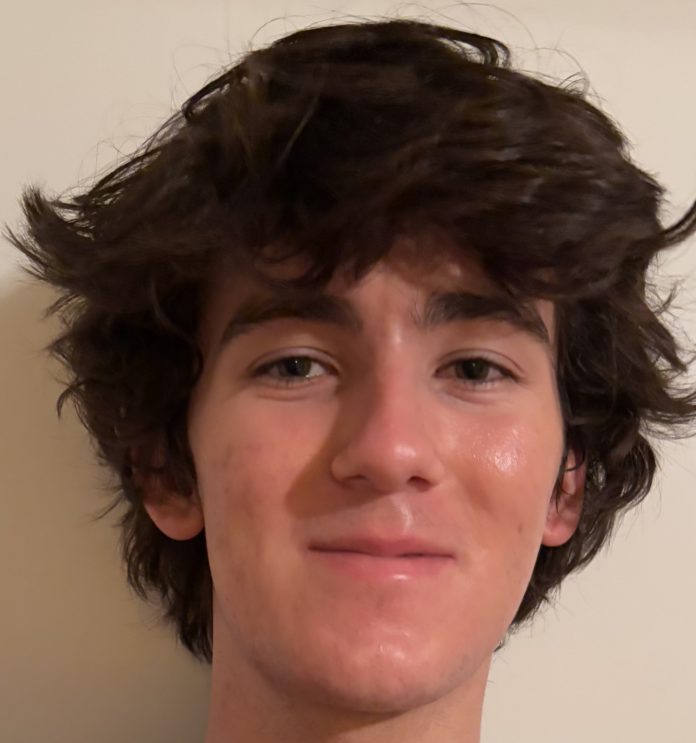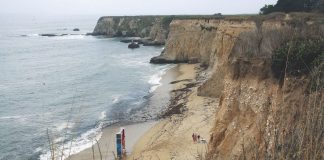Editor’s note: Zen Weaver is a junior at Aptos High School. This is his second story for The Pajaronian. We welcome contributions from aspiring young journalists. Email ed****@********an.com
In an era where headlines spread faster than facts, Santa Cruz County residents, politicians, and community leaders are tasked with navigating a complex and constantly changing media landscape.
From neighborhood coffee shops to city council chambers, discourse on political issues is regularly shaped—and sometimes skewed—by the sources delivering the news. This begs the question: how does media bias, intentional or not, influence local governance, civic engagement, and public trust in our coastal community?
In the modern age of media, national news has been hugely influential in the way stories are distributed through various levels of reporting and understood within communities.
News at the national level did not “start to become… hugely influential until the late 20th century… [during which] a lot of regulations were removed by the government” says Nolan Higdon, published media literacy expert and lecturer at UC Santa Cruz.
This delegation of media power has led to a handful of huge corporations buying a majority stake in all news reporting, he says.
A large portion of this corporate control focuses on efficiency, packaging content and “sending it out to different markets without paying… more local reporters” Higdon says.
He adds that the obstacles that arise due to a largely national media landscape—as well as its direct correlation to the phenomenon referred to as news deserts—lead to “huge parts of the country [with] no news covering it. The only news they get is… national… we know less and less about what’s going on… and as a result of that, start talking about our local elections through… a national lens.”
These pockets of news illiteracy are often focal points of political misinformation, with the goal of swaying audiences into opinions, “because national politics focus on big markets, [politicians] talk about the American people like we all live in big cities… when there are a lot of non-college educated, rural people who make up this country,” Higdon says.
This means that these political sentiments often do not accurately reflect the ideas of the community.
Higdon points out the 2021 California recall election of Gavin Newsom as an example of this. Newsom labeled the entire incident the “Trump Recall,” using a large, national figure to redirect political focus when, in reality, the California Republican Party were the ones at the heart of the recall.
The result was misplaced responsibility for the recall and a skewed perception of the actual reasons for the recall in places that only received news coverage at the state or national level.
Surging over-generalization in coverage and a lack of localized media continues to contribute towards shifts in politically charged news throughout the United States.
At the local level, Santa Cruz County has one of the richest and most diverse media landscapes in all of California. Higdon confirms this, stating that “Santa Cruz County, comparatively, has a lot more media… you’ve got a ton of news outlets. You’ve got the Santa Cruz Sentinel, you’ve got lookout, you’ve got the city upon a hill, the campus newspaper. There’s so many communities in this state that have zero newspapers. So in that way, Santa Cruz is looking a lot better compared to other places in the state.”
Councilwoman Shebreh Kalantari-Johnson speaks on her relationship with local news, and her avid utilization of it as a tool.
“I do use media as a medium to communicate with the community and… ultimately, I think we have good news outlets… we have news outlets that really want to do the right thing.”
Despite the large number of journalists in Santa Cruz, the local news can’t always be perfect, because, in the end, “Media outlets are made up of people, and people are imperfect,” Kalantari-Johnson says. “So I think that just inherently there will be some skewed or biased information out there.”
Kalantari-Johnson recalls her own experience handling misconstrued quotes.
“I’ve had interviews with reporters and again, intentional or unintentional, sometimes there’s only parts of my interview that are integrated into the report, or I feel that parts of it are taken out of context, or said something and didn’t realize it was on the record,” she said.
Despite the issues that follow the expansion and reimagination of traditional reporting, Kalantari-Johnson acknowledges the crucial role that journalism plays in her work and for the health of our community.
“I do use media as a medium to communicate with the community… I’ll write an op ed and I’ll get my voice out there,” she says.
Having political leaders participate in direct and clear communication with the public can be seen as a way to stymie the effects of political media bias and promote connectedness between lawmakers and the general public.
Kalantari-Johnson herself reiterates the importance of vulnerability and transparency within local government and involved community leaders, enabling trust and support from local individuals.
Beyond traditional journalism, media coverage has been hugely impacted by the rise in popularity of social media, as well as the habit of consuming all of one’s news from these sources alone. Social media has been revolutionary, and hugely influential, in the way people develop their ideas about many topics, including local politics to a large degree.
Watsonville Mayor Maria Orozco finds that social media can be an effective tool to communicate with the public on important community topics.
She says she is “a big proponent of it, because it provides a different avenue to reach a broader audience… with social media you have your own platform to engage with residents and raise awareness on important issues that matter and that impact their daily lives.”
For her, social media has been hugely influential in the way she is able to reach out and connect to those in our community, enabling an ability to more positively impact important social issues.
However, certain parallels can be drawn between traditional journalism and social media as a source of news. Orozco also says that “the negative piece to that is that you really can’t control the way folks express themselves, and that can be a challenge.”
There is duality in the ease of use and transfer of information, meaning that both messages from leaders and misinformation spread by others can quickly disperse throughout the community, leading to a dichotomy within almost all social media platforms between what is truth and what fictional ideas pervade in a community.
Media coverage has always been integral for elections and the way the public forms its opinion. Now, with the rise of social media and new ways to spread political sentiments, it is up to the community and its leaders to adapt to these changes in order to handle a constantly changing political and journalistic landscape.








